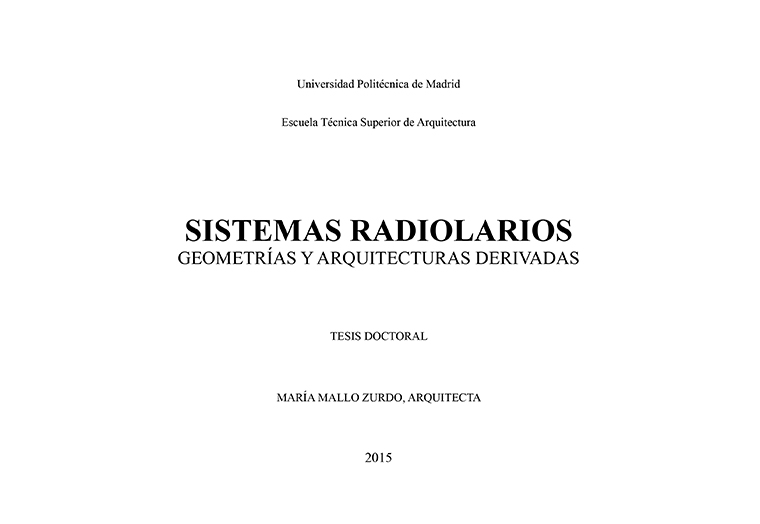One of the most important issues in the contemporary debate, is the one concerning the long-term sustainability of society as we understand it today. The human being is recovering the lost sensitivity that conceived us as part of the natural cycle of life. We have finally understood that we cannot be self-sufficient and independent of the natural environment which surrounds us. Beyond respect and care, we’ll find that the gateway to the infinite knowledge that nature provides us at all levels and at all scales is open.
Within the architectural discipline, there have been remarkable examples such as Antoni Gaudí or Frei Otto who have inspired their work in the natural world. Both, found in nature the strategies and basis of their architectural designs. However, they have been a minority within the huge cast of architects defenders of the right angle.
In recent decades, the trend is changing. We are not referring to the growing sensitivity in trying to achieve energy efficiency that has led to an enhancement of vernacular architecture, transferring its wisdom to bioclimatic strategies. We refer to a specific case within the wide range of architectural forms that have appeared thanks to the integration of computer tools in both design and production processes. We are interested in architectures that exploit these techniques to analyse and interpret the complex and highly efficient strategies found in nature, and shift them to the discipline of architecture. This trend, which is being implemented in the framework of the Biomimicry or biomimetics, is called Bioarchitecture.
This thesis deals with morphology and more specifically with morphogenesis. Morphology is the study of a concrete form that allows us to understand a specific case. However, our focus is centered in morphogenesis or, in other words, the study of the processes of generation of these forms, in order to replicate patterns and generate a range of adaptable and reconfigurable cases. The fact of studying shapes does not mean that this is a "formalistic" thesis with the pejorative connotation that is often attributed to this term. This study conceives the concept of shape as Nature does: as a synthesis of efficiency. There is no meaningless form in nature. Furthermore, forms and shapes in nature play a particular role and are developed with minimum energetic consumption. This quest to find the efficient shape is what makes us go beyond formalistic architecture.
The road of morphological investigation is traced, as the title of the thesis suggests, following the thread of radiolaria. These single-cell microorganisms possess very complex skeletons, so to be able to understand their morphology we must establish a wide spectrum which spans throughout more than 4.000 years of human knowledge. From the discovery of the platonic solids, polyhedrons which configure a huge range of global shapes of these skeletons, through the application of generative algorithms which allow us to understand and recreate the behavioral patterns behind the systems of compression and irregular tessellation of the radiolarian skeletons. The thesis does not pretend to lay out the problem from a biological, paleontological standpoint, although inevitably the first chapter is developed through an analysis in reference to the current state of the science. A deeper analysis of morphological aspects and different positionings is taken into account where these microorganisms have served as reference in the architectonic discipline. In addition we find necessary to analyse other natural patterns which share generative strategies with radiolarian skeletons.
Aforementioned, in the second chapter an itinerary of the most basic geometries to the more complex ones is addressed. These are related, in this chapter, to the generative strategies of the shapes found in microorganisms. At the same time, the analysis of these geometries is placed among examples of applications inside the fields of architecture, design and the arts. To come to an end, a time chart synthesizes and relates the three investigation paths addressed: natural, geometrical and architectonic.
After the two central chapters, the final chapter summarises the strategies analysed and applies the knowledge acquired throughout the thesis. This final chapter is shaped by the realization of different prototypes which range from traditional analytical drawings, to digital fabrication and parametric design, going through plaster analogical models, metal bars, resin, silicone, latex, etc.





